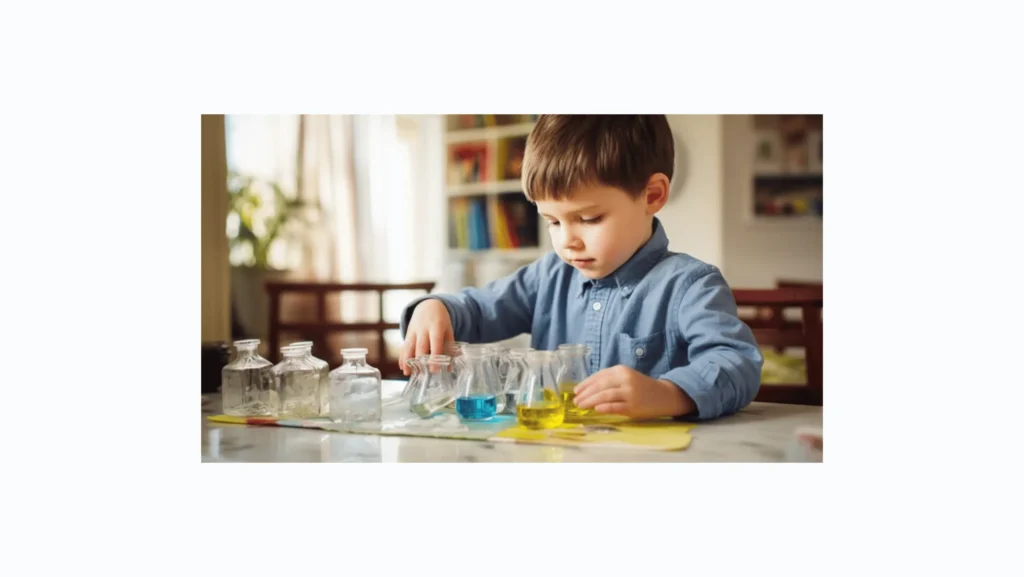As a working mom juggling a full-time job, motherhood, and the occasional (okay, frequent) pile of laundry that seems to regenerate overnight, finding simple, engaging activities for my toddler son has become a lifeline. Enter: sensory bins. These magical little boxes have saved my sanity more times than I can count.

Why Sensory Bins?
Sensory bins are hands-on tools that engage children through play involving their senses: touch, sight, sound, and even smell. They’re perfect for toddlers and young children, offering both entertainment and developmental benefits like fine motor skill improvement and imaginative play.
The best part? They’re affordable, easy to make, and you can pull them together with things lying around the house. I’ve used everything from dry pasta and cotton balls to rice dyed with food coloring. The possibilities are endless.
Real-Life Chaos Meets Creative Calm
There was one particular Monday morning when I was trying to attend a virtual meeting, make breakfast, and calm my son who was clearly not a fan of me working from home. That’s when I reached for the “Under the Sea” sensory bin we’d made over the weekend: blue dyed rice, plastic sea animals, some shells from last summer’s beach trip, and a few scoops and cups.
Like magic, he was mesmerized. I got through my meeting, he played happily for almost 40 minutes, and I felt like a superhero for once.
Easy DIY Sensory Bin Ideas
Here are some of our tried-and-true favorites:
- Rainbow Rice Bin
- What you need: White rice, food coloring, vinegar, Ziplock bags, a baking sheet
- Mix rice with a few drops of food coloring and a tiny bit of vinegar in bags. Shake well and let it dry on a baking sheet. Layer the colors in a bin and add small toys, spoons, or cups.
- Construction Site Bin
- What you need: Kinetic sand or dirt, small toy trucks, pebbles, bottle caps
- Let your child dig, haul, and build their own mini construction zone.
- Nature Exploration Bin
- What you need: Leaves, twigs, pinecones, small rocks, flowers (all child-safe)
- Perfect for exploring textures and natural objects without leaving the house.
- Water Play Bin
- What you need: A shallow bin, cups, spoons, sponges, rubber ducks or floating toys
- Ideal for hot days, and surprisingly calming for kids!
Time Management: Finding the Minutes
I know what you’re thinking: I barely have time to shower, let alone create Pinterest-worthy bins. Same here. But I’ve found a few tricks that work:
- Prep on weekends. I carve out 30 minutes on a Sunday to prep bins for the week. I line them up on a shelf and just pull one out when needed.
- Rotate and reuse. Swap out themes weekly, and reuse materials. A bag of rainbow rice has lasted us months.
- Keep it simple. Not every bin has to be elaborate. Some dry beans and measuring spoons can keep a toddler busy for half an hour.
Overcoming Guilt and Embracing Imperfection
There have been days when I’ve plopped my son in front of a sensory bin with a snack and an iPad just so I could meet a deadline—and I used to feel so guilty about it. But here’s the thing: motherhood isn’t about perfection. It’s about doing your best with what you’ve got.
Sensory bins help me feel like I’m providing enriching activities without burning myself out. And watching my son engage with them, ask questions, and play independently has helped me reframe what “good parenting” looks like.
Self-Care Isn’t Selfish
I used to feel like any time I spent away from my son had to be “productive.” But I’ve learned that my well-being affects his. Creating sensory bins actually became a kind of self-care for me—a creative outlet and a chance to feel like I was doing something fun and functional.
Sometimes, I’ll sit with my coffee and just watch him play. Other times, I’ll join in. It’s calming, connective, and reminds me that I don’t have to be “on” all the time to be present.
Balancing Work and Life: The Ongoing Dance
There’s no perfect balance, only constant adjustment. Some days I crush it at work and still have dinner on the table. Other days, we’re eating cereal at 8 PM and I’m sending emails in my pajamas.
Here’s what’s helped me the most:
- Accept help. Whether it’s a partner, neighbor, or delivery service—take it.
- Create routines. Kids thrive on routine, and so do I. Morning sensory play has become part of ours.
- Lower the bar. Not every moment has to be Instagram-worthy. Real life is messy, and that’s okay.
You’re Doing Better Than You Think
If you’re a working mom reading this, feeling overwhelmed or unsure if you’re doing enough—please know that you are. The fact that you’re even looking for ways to engage your child means you care deeply.
Sensory bins aren’t just about play. They’re a reminder that joy can be simple. That your time, though limited, is meaningful. That a few scoops of rice and a handful of toys can create a world of imagination for your little one—and a few moments of peace for you.
So go easy on yourself. Laugh through the mess. Celebrate the wins. And remember, you’ve got this, Mom.

